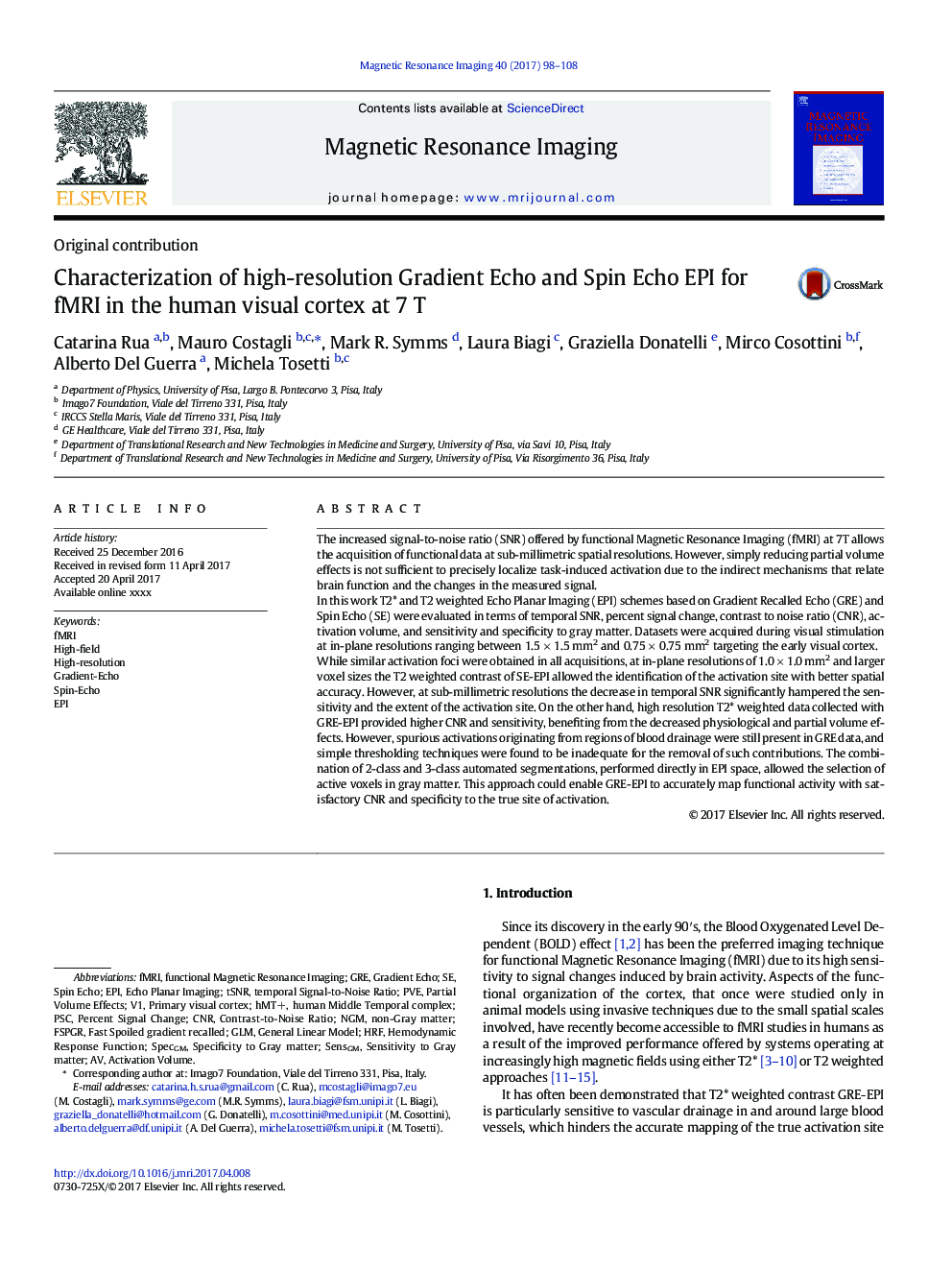| Article ID | Journal | Published Year | Pages | File Type |
|---|---|---|---|---|
| 5491533 | Magnetic Resonance Imaging | 2017 | 11 Pages |
Abstract
While similar activation foci were obtained in all acquisitions, at in-plane resolutions of 1.0Â ÃÂ 1.0Â mm2 and larger voxel sizes the T2 weighted contrast of SE-EPI allowed the identification of the activation site with better spatial accuracy. However, at sub-millimetric resolutions the decrease in temporal SNR significantly hampered the sensitivity and the extent of the activation site. On the other hand, high resolution T2* weighted data collected with GRE-EPI provided higher CNR and sensitivity, benefiting from the decreased physiological and partial volume effects. However, spurious activations originating from regions of blood drainage were still present in GRE data, and simple thresholding techniques were found to be inadequate for the removal of such contributions. The combination of 2-class and 3-class automated segmentations, performed directly in EPI space, allowed the selection of active voxels in gray matter. This approach could enable GRE-EPI to accurately map functional activity with satisfactory CNR and specificity to the true site of activation.
Keywords
GLMFSPGRtSNRPVEHRFCNRhMT+gradient-echoEPINGMGREPSCPartial volume effectsSpin echoSpin-echoHemodynamic response functionecho planar imagingfunctional magnetic resonance imagingfMRIPercent Signal ChangeActivation volumeprimary visual cortexGeneral linear modelHigh-fieldContrast-to-noise ratioHigh-resolutionGradient echo
Related Topics
Physical Sciences and Engineering
Physics and Astronomy
Condensed Matter Physics
Authors
Catarina Rua, Mauro Costagli, Mark R. Symms, Laura Biagi, Graziella Donatelli, Mirco Cosottini, Alberto Del Guerra, Michela Tosetti,
